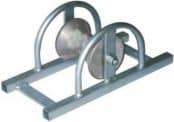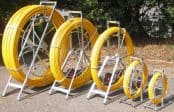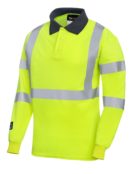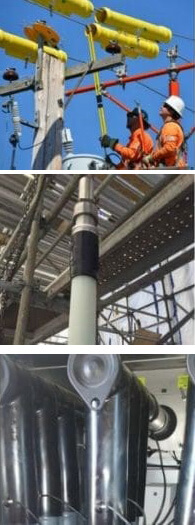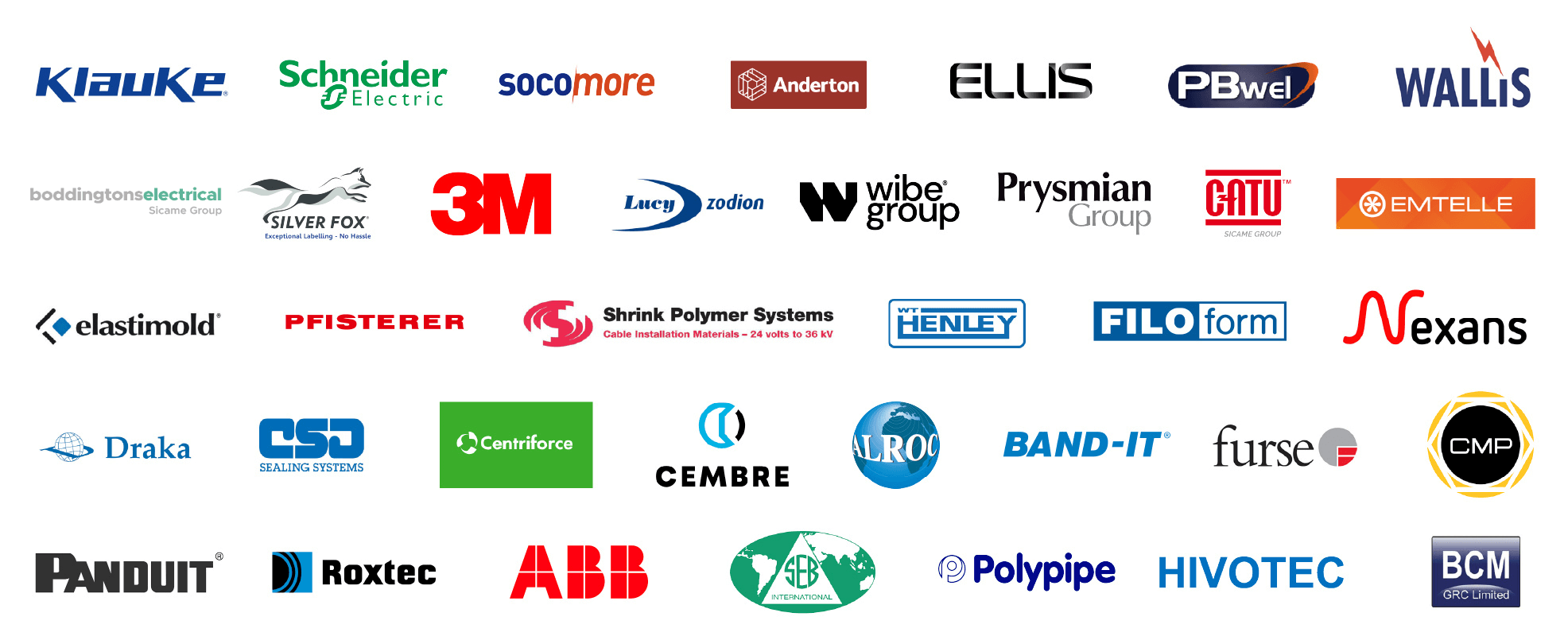Cable Drum Handling | A Guide by LEONI Cables
Published 30 Jul 2021
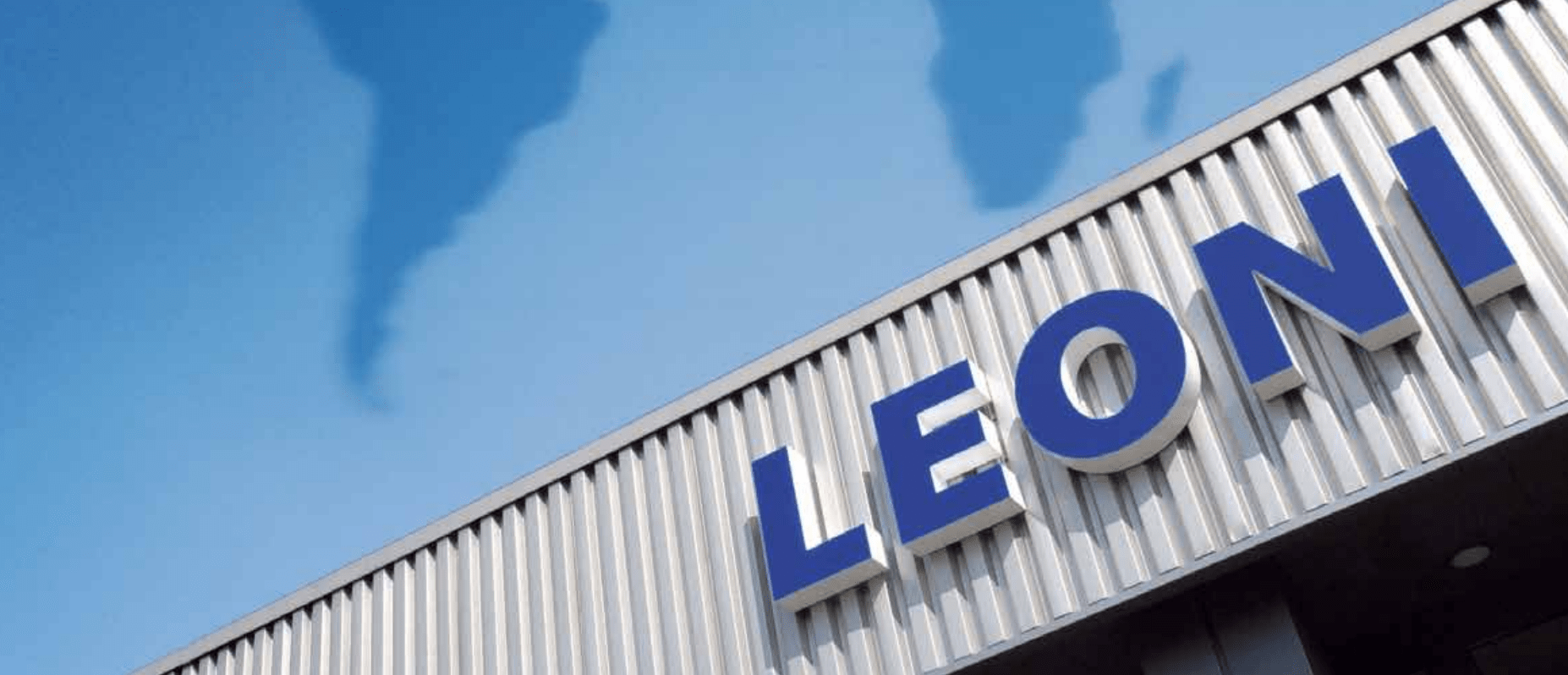
Guidelines for cable drum handling during transport and storage
Transport
Cable drums must be handled with care.
Improper handling procedures or cable drum handling equipment can easily cause damage like broken drums or visible or invisible damage of the cable itself.
Main danger comes from invisible damages leading to unusable cables.
Therefore some base guidelines shall be followed. The cable itself must always be protected and may not be touched improperly during transport and storage. A drum, damaged by handling or showing signs of wear or rotting must be checked. Special handling procedures may be necessary.
If a wooden drum is handled and/or stored properly as described in this document LEONI Kerpen GmbH gives warranty for stability and usability for a period of up to 18 months after delivery. In case of wooden drums show signs of damage from transportation any warranty obligation given for cable drums and any subsequent cable problems resulting from it are null and void.
Beside the general guidelines, please refer to the cable data sheet for additional information regarding temperature range and possible special requirements for transport and storage.
- Lifting cable drums with a fork lift is only allowed from the “flange side”. The fork may never touch the cable or its protective cover to avoid damage. The fork must support both flanges while lifting.
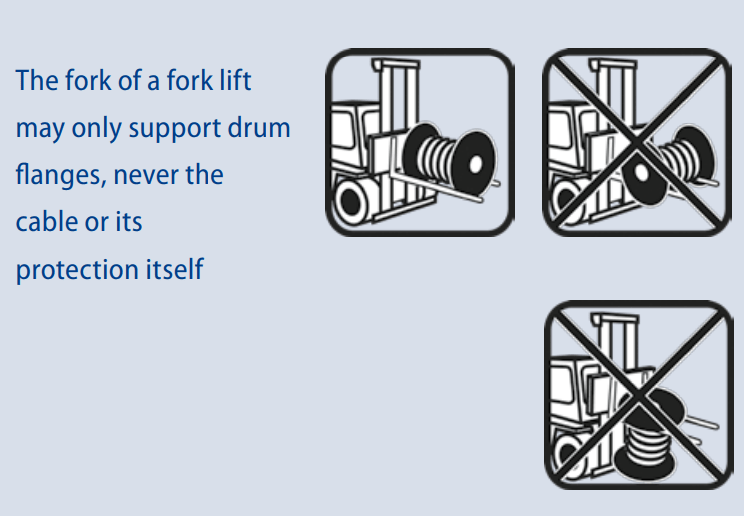
- If lifting a drum with a crane an axle or a spreader beam must be used to avoid lateral pressure on flanges.
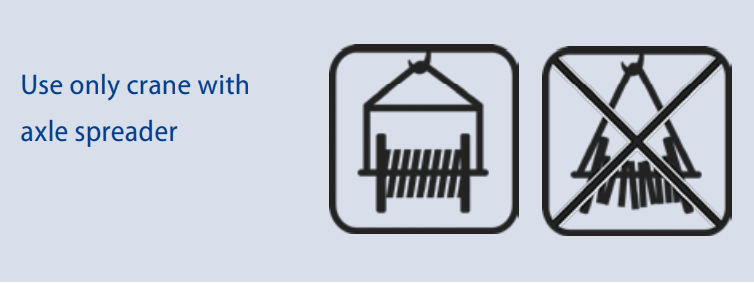
- Suitable devices must be used for loading and unloading in order to avoid damage to the cable and the drum. Drums may never be dropped from a truck, ramp or container.
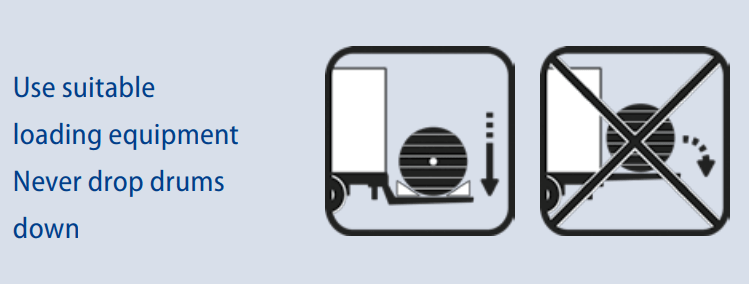
- Cable drums should only be transported with suitable vehicles and must be fixed, so that they cannot shift during transportation. The same applies in case cables are transported in a container.
- During transport and storage drums shall always be in upright position.
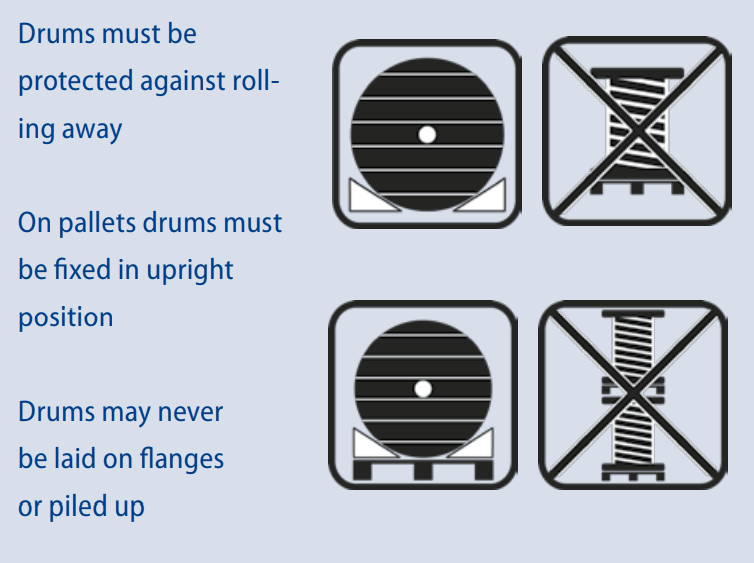
Drums must be protected against rolling away. On pallets drums must be fixed in upright position. Drums may never be laid on flanges or piled up.
- All screws holding the flanges must be checked and tightened before moving the drums.
- In case of dry and hot weather conditions screws have to be tightened as required to compensate for shrinking of wood. Tightening of screws shall be done with a torque wrench. The force shall be as mentioned on the drum or as follows:
| Drum Size | Force |
| 700–1400 mm | 80 Nm |
| 1600–2200 mm | 100 Nm |
| 2500–2800 mm | 120 Nm |
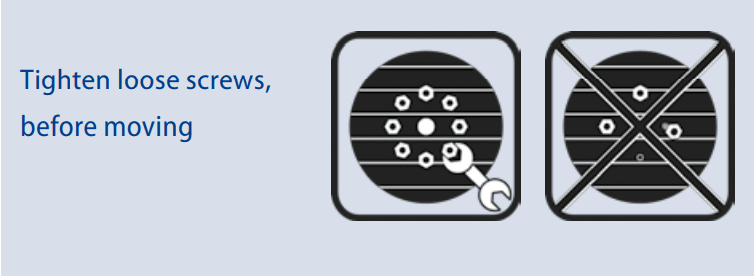
- Drums with cables may only be rolled over short distances and on a firm and even surface in the direction which is indicated on the drum (label with arrow and inscription “Roll This Way”).
- Each drum is identified by an unique drum number. In case a cable or part of it is rewound onto another drum, it is recommended to note the original drum number, otherwise backtracking is impossible.
- Drums must be labelled to allow easy and quick identification of the cable:
– identification labels showing cable type, length, code no., etc.
– other markings.
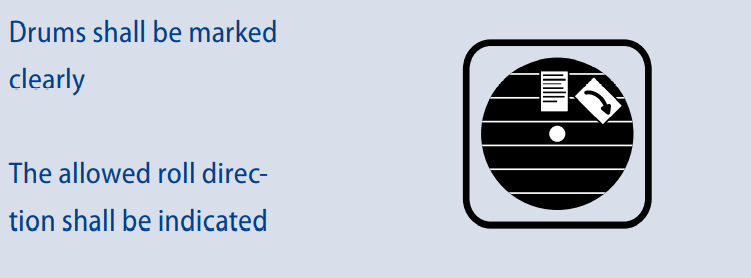
- The maximum temperature for transportation is indicated in the data sheet, section “Transport and Storage”.
- Due to interdicted stress during transportation, nails used to fix the two layers of a flange might be forced to shift into the inner side of a drum. Drums damaged or overstressed (e.g. dropped on a flange) needed to be checked carefully from the outside. Nails in question have to be removed by pliers before rolling or turning the drum to avoid continuous damages of outer sheath by rotating cable layers.
It is always a sign of incorrect cable handling, when hats of nails are sticking out of the inner flange of a cable drum. This movement is caused by shifts of the 2 wooden flange layers against each other under interdicted force while moving the drum.
In addition, multiple damages might occur by such a nail hat, due to unavoidable but “normal” movements of a cable on a cable drum while being un-drumed.

Cable Rollers
Cable Drum Storage
Cable drums shall be stored safely. Improper storage conditions can easily cause damage to cable drums or cables themselves. Therefore some base guidelines shall be followed.
The cable itself must always be protected and may not be touched improperly during transport and storage.
Check drums before moving. Check for nails, which might have shifted out of the inner side of the flange. Remove it from the surface before rolling or moving the drum.
A damaged drum must be checked. Special procedures may by necessary, like rewinding on a new drum.
If a wooden drum is handled and/or stored properly as described in this document LEONI Kerpen GmbH gives warranty for stability and usability for a period of up to 18 months after delivery. In case wooden drums show signs of damage from handling and/or storage any warranty obligation given for cable drums and any subsequent cable problems resulting from it are null and void.
Beside the general guidelines, please refer to the cable data sheet for additional information regarding temperature range and possible special requirements for transport and storage.
- Cables for indoor use shall be stored indoor.
- Cables for outdoor use may be stored outside. Their allowed temperature range for storage should cover the conditions defined for storage. See cable data sheet, section “Transport and Storage”, for any details.
- All cables on drums shall be protected with suitable protection package, such as black plastic sheeting, lagging, etc.
- Cables (especially with black sheath) exposed to direct sunlight will become warmer than the ambient temperature. It must be ensured that the temperature of the cable will not exceed the allowed maximum temperature for storage. See cable data sheet, section “Transport and Storage”, for any details.
To avoid direct exposure to sunlight the cable shall be protected with suitable package, such as a dark foil, and/or by storage in shadow.
- Cable ends must be fixed on the drum to avoid getting loose during transport, handling or storage.
- Cable ends shall be sealed with caps against ingress of water.
- Drums must be labelled to allow easy and quick identification of the cable and of main handling issues:
– identification labels showing cable type, length, code no., etc.
– a label to indicate the allowed roll direction (“Roll This Way”)

- Drums must be handled and stored always in upright position, standing on the flanges. The ground must be firm, even, well-drained and stable, so that the flanges cannot sink in. Pressure on flanges must be equal on complete flange surface in contact with ground.
- Drums must be protected against rolling away while stored.
- The drums shall not be standing in direct contact with water or damp soil to avoid rotting of the drum.
- Drums may never be transported or stored lying on a flange. Damages to cable or drum are likely in this case. Lying and handling horizontally is only acceptable for small drums and light weight cables.

- Cables shall be stored in areas without influence of high heat or close to (open) fires. Areas where chemicals, petrol, etc. could be spilled over them must be avoided.
- If stored in a secure and suitable area, periodical inspections of the drums are recommended, at least quarterly. In case of direct exposure to weather, sunlight, etc. the interval between inspections should be shortened.
- Damaged drums must be checked carefully. It might be necessary to take special care during transport or installation or to rewind the cable on another drum.
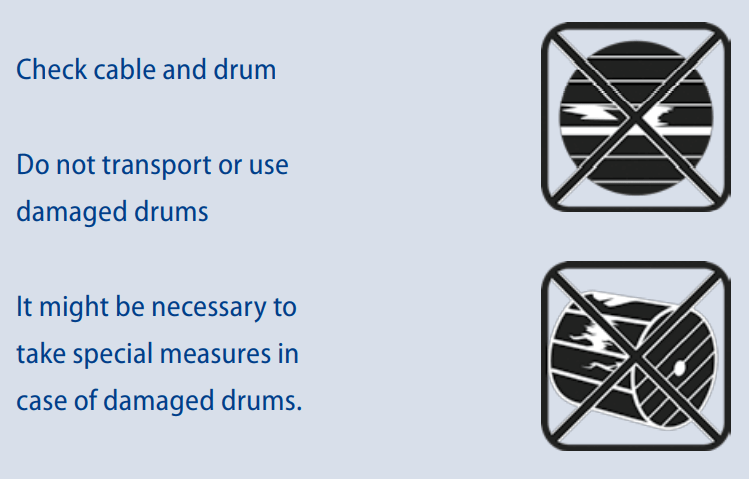
Further Reading
Cable Drum Handling | Halogen Free Shipboard Cables Recommendations
HV Cables | Underground Cable Tunnel Pull 400kV By ABB
Cable Drum Handling | Jack Towers for LV to EHV Power Cable Lifting & Site Handling
Cable Drum Handling & Laying Cables | A Guide from Nexans
Cable Pulling | 37km Offshore Cable to Connect NnG to Onshore Substation

Press Release | Thorne & Derrick Appointed Approved Stockist for UK Leading Cable Pulling Equipment Manufacturer
CABLE SOCKS & PULLING PRODUCTS LV MV HV
Complete range of LV, MV and HV cable pulling products for installation and enabling cable jointing in trench or ducts including LV, 11kV/33kV medium voltage (MV), 66kV/132kV high voltage (HV) and EHV transmission and distribution cables up to 400kV.
Further Reading | Cable Drum Handling & Laying Cables | A Guide from Nexans

Cable Rollers | Duct Rods | Cable Socks | Cable Lubricant | Duct Seals | Cable Duct | Cable Grips








